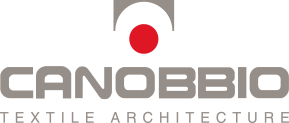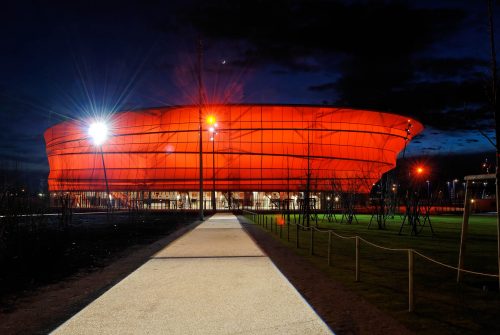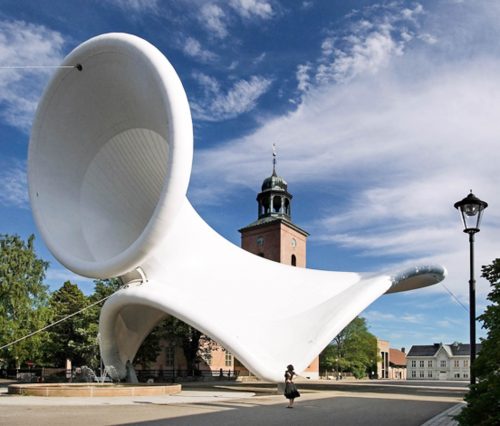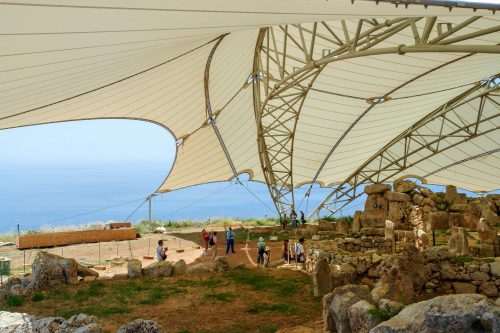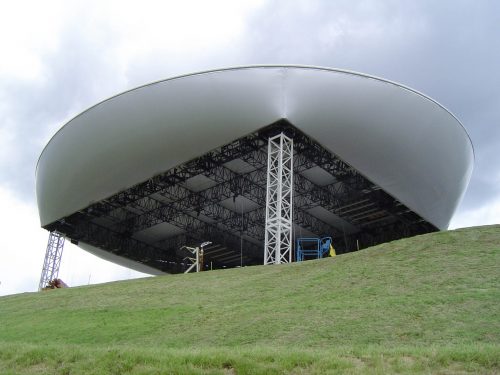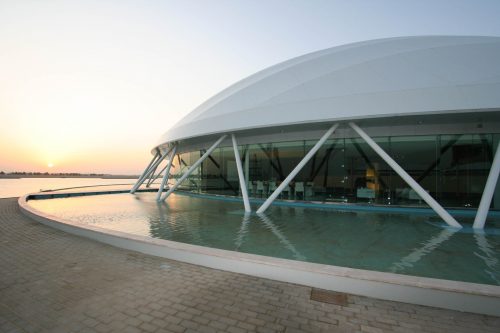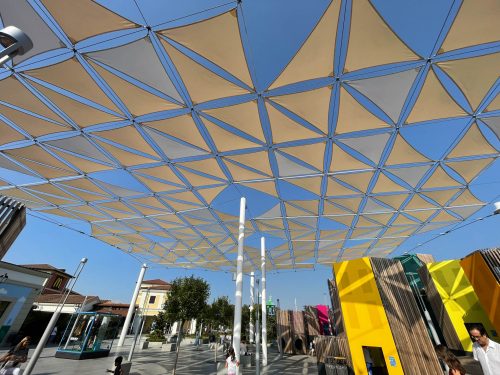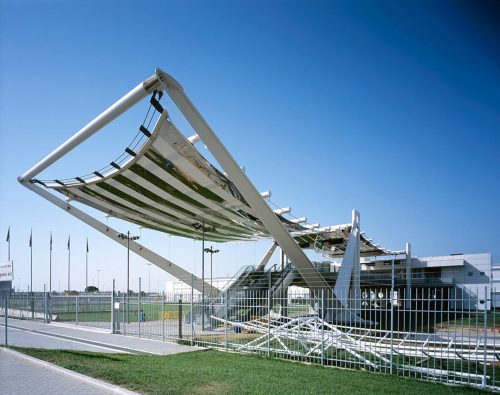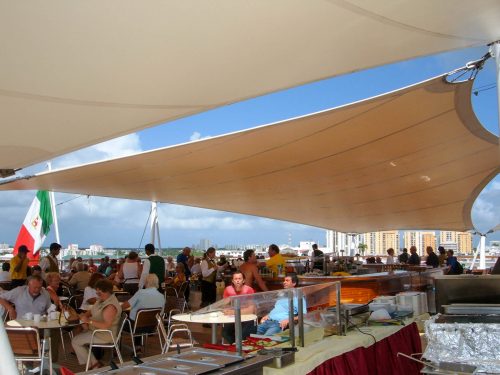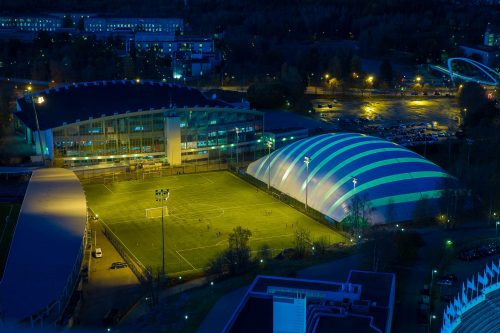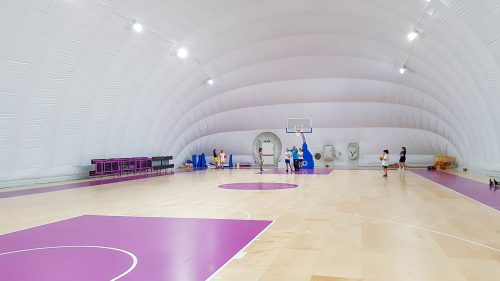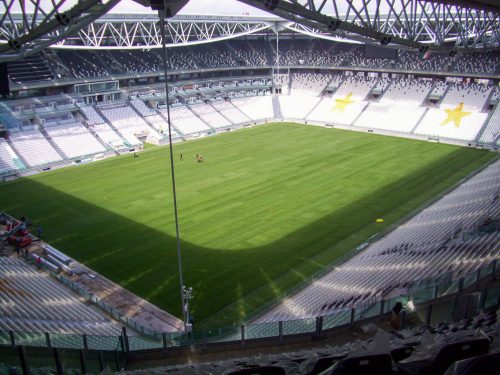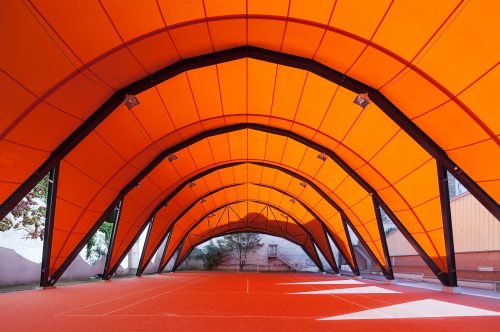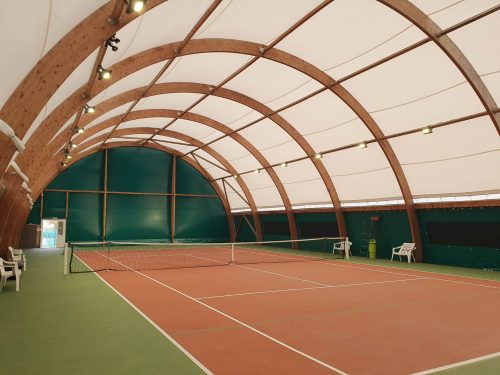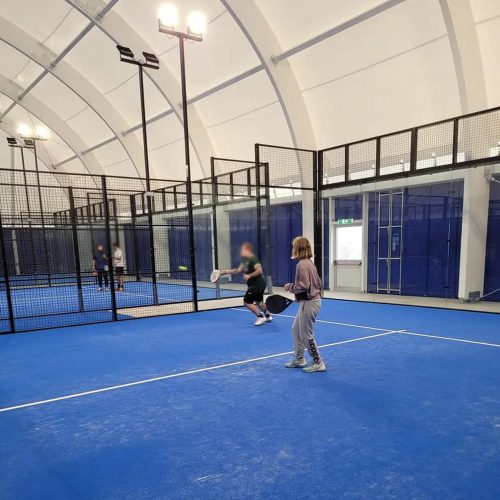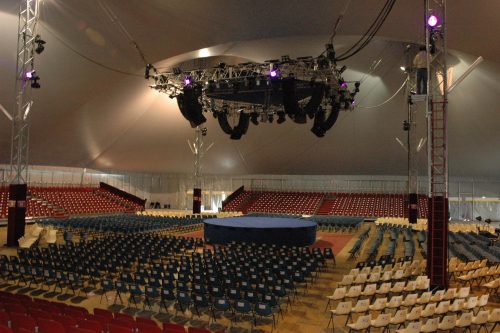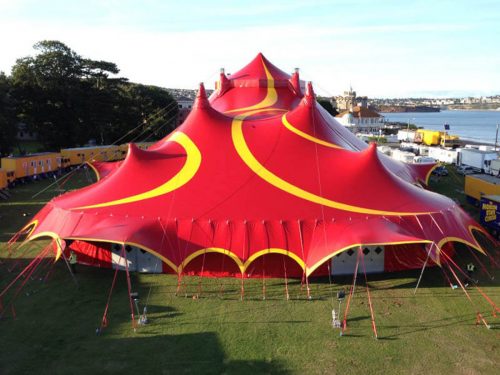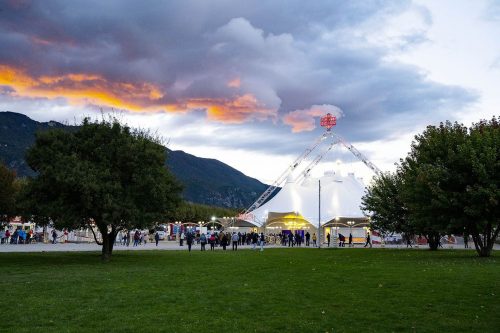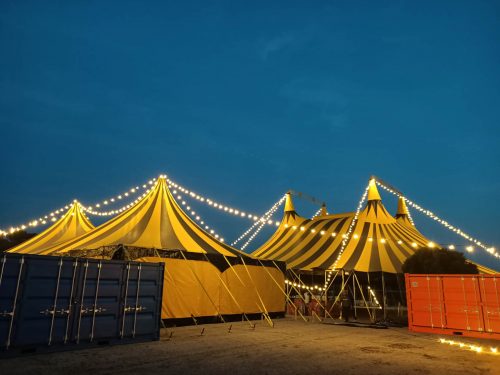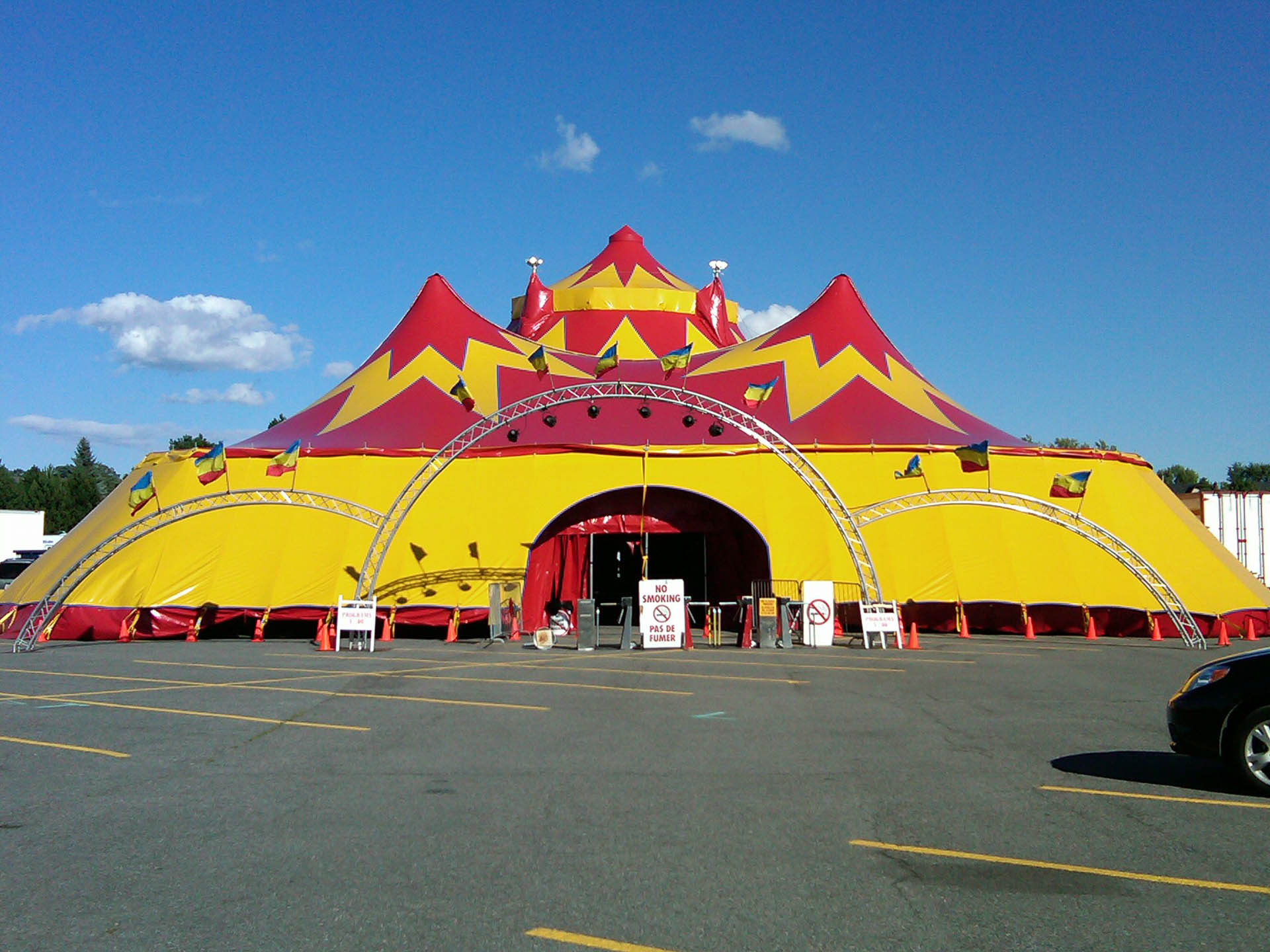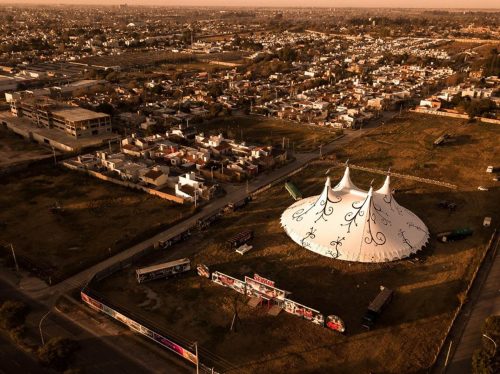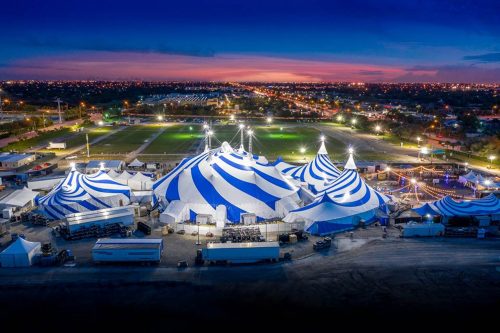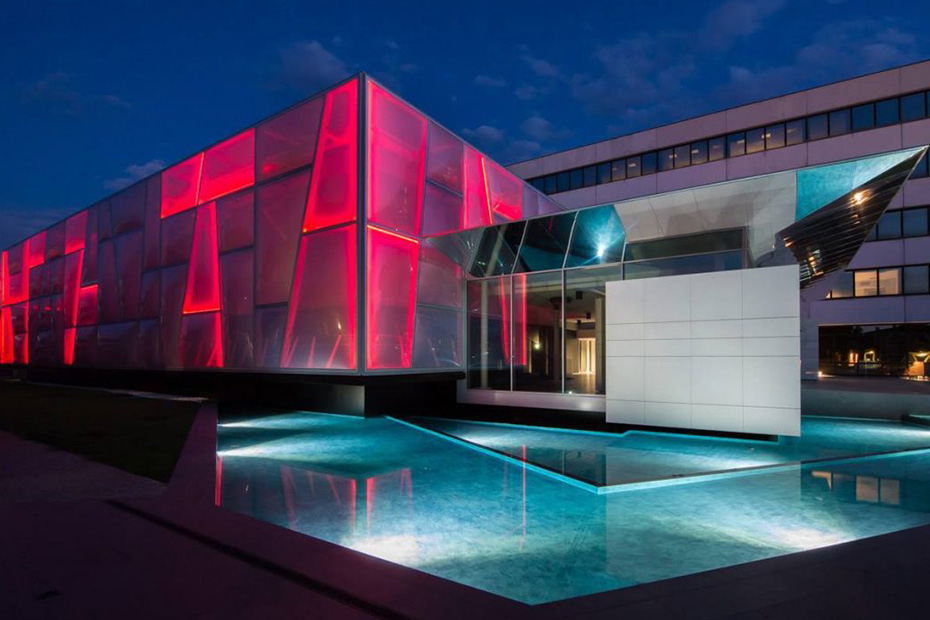So-called ETFE has now become one of the most popular materials among architects around the world and is finding more and more applications in construction.
ETFE stands for Ethylene-Tetrafluoro-Ethylene, a thermoplastic polymer containing fluorine atoms, which thanks to their exceptionally strong bond, give life to a transparent plastic material able to withstand high levels of thermal stress and chemical aggression.
EFTE is used in tensile panels or pneumatic cushions that cover architectural buildings, usually embedded in a lightweight aluminum structure.
The construction phase of the EFTE involves the assembly of several overlapping layers welded together: a system that recreates a real air chamber able to control the degree of permeability to light and heat of the individual elements, affecting the level of insulation of the envelope and its energy performance.
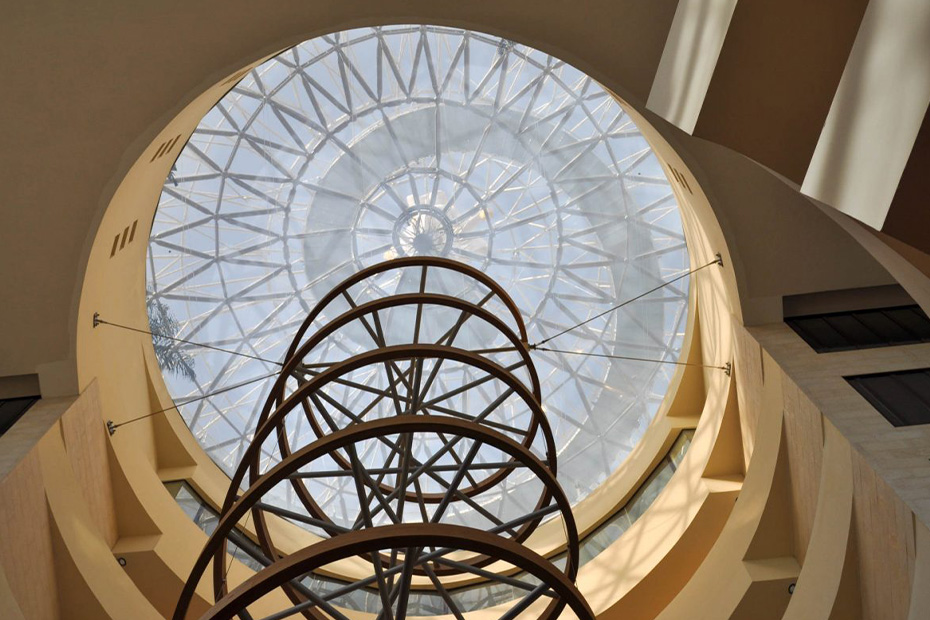
History of ETFE
ETFE was discovered by American chemist Roy Plunkett in the 1940s inside a cylinder of tetrafluoroethene occlusase following a mistake.
The first application that was thought at that time was in the military sector, until in the early ’80s, a mechanical engineering student from Bremen, Stefan Lehnert, a passionate sailor, researching new technologies for sailing, found in ETFE incredible potential suitable for the construction industry.
In 1982 the first building made of ETFE was built: the “Mangrove House,” a large pavilion intended for the Dutch Zoo in Arnhem, although the project that really made this material famous was the “Eden Project,” a massive geodesic greenhouse built in Cornwall in 1996, considered one of the best results of integration between sustainable architecture and environmental restoration.
Characteristics of ETFE
- The main feature that intrigued designers and led them to use ETFE in architecture is undoubtedly its lightness (350 g/sqm). The low weight makes structures made from this material preferable from a design point of view, and transport and assembly costs are much lower.
- Another important characteristic of ETFE is its thermal resistance. The extremely strong chemical composition leads to a resistance capacity around 170° without altering its physical properties: ETFE is fireproof and self-extinguishing thanks to the presence of fluorine.
- Another amazing feature of this material is its ability to resist the attack of UV rays. While other plastics that are usually used to replace glass tend to yellow after a while, ETFE does not yellow and with proper maintenance can last up to 40 years. What’s more, when its cycle of use is over, the membrane is melted down and reused, thus obtaining a 100% recycling rate.
- ETFE is also an excellent thermal insulator, which is why, when used, there is a significant reduction in energy costs for the maintenance of structures.
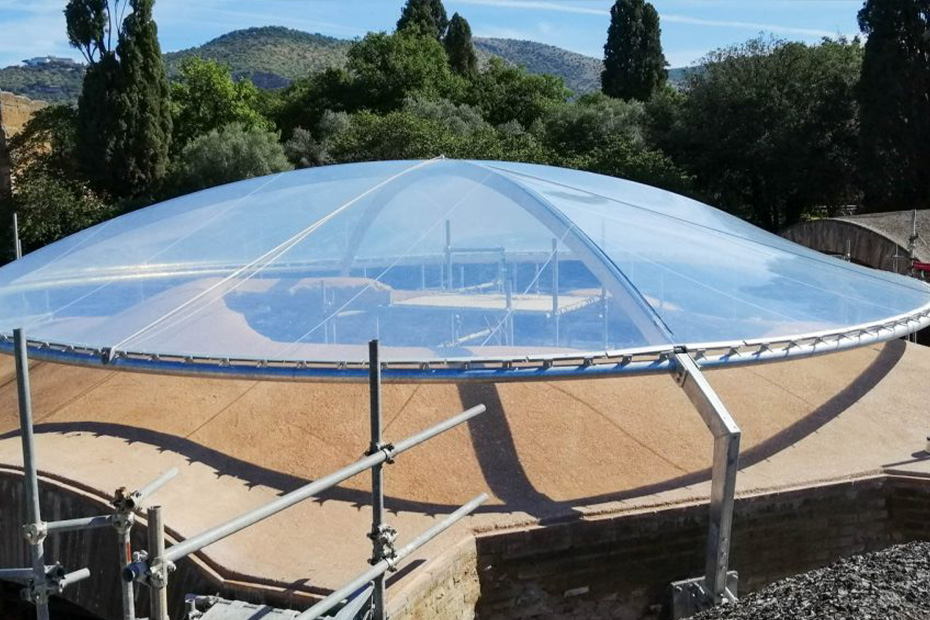
Canobbio Textile has carried out numerous architectural projects in ETFE, including the skylight of the San Raffaele Hospital in Milan and the Korce Sport Center in Albania, to mention some of the most prestigious examples.

